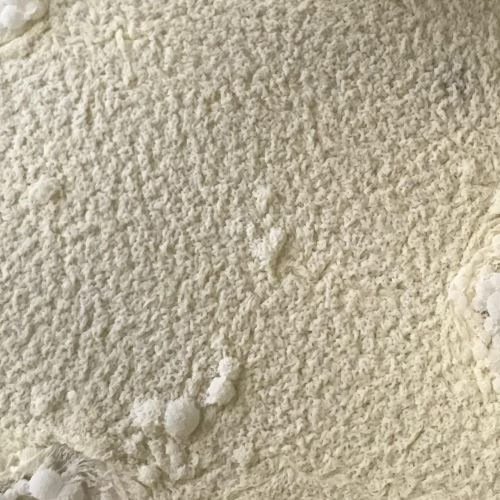Kahm Yeast: the Wild Ones
- Sylvia Rose

- Feb 20
- 5 min read
Kahm yeast is familiar in fermentation. A collective of wild yeasts including Pichia, Kazachstania and Candida spp, it's the cloudiness in brine or a whitish wrinkly film appearing on the surface.

About Kahm Yeast
Kahm yeast collectively contains many wild species. They're naturally present on fruit and vegetables, especially those of high sugar content. Wild yeast commonly appears on vineyard grapes as a whitish film.
The word “kahm” goes back to the Middle High German kan. This in turn derives from Latin cana, literally "gray hair", referring to the grayish layer on wine.

Kahm yeast can develop on ferments when sugar is depleted and the pH decreases due to lactic acid production by industrious bacteria. It can look like a translucent pale skin, or thick, white and wrinkly.
Yeasts of the kahm group are active in anaerobic conditions of high sugar and acidity between 4.0 and 6.0. Brewer's yeast Saccharomyces cerevisiae is comfortable with a pH as low as 2.9, though it functions best at 5.5.

Genera in kahm yeast can include:
Debaryomyces
Mycoderma
Pichia
Kazachstania
Candida
Zygosaccharomyces
Saccharomyces
Of these, Zygosaccharomyces spp. are most associated with spoilage especially in wine. Species of this genera are able to produce acetic acid, the active component in vinegar, and thus can ruin a batch of booze.

Kahm yeast enjoys warmer temperatures. Its growth can double at 24°C (75°F). In aerobic conditions yeast consume sugars and produce carbon dioxide and water. In anaerobic conditions they expel CO2 and ethanol.
In aerobic settings yeast produces more energy to prosper. In anaerobic habitats it makes more booze. In veg fermentation alcohol content is miniscule as the process is dominated by LAB.

Kahm yeast isn't harmful, nor does it necessarily indicate a problem. It's safe to ingest as long as there is no mold, but flavor or textures may change.
Kahm yeast has the power to create undesirable flavors and smells. These include overly sour or acid tastes and musty death-like aromas.

Conversely, kahm yeast can enhance flavor complexity of fermented products. Some brewers use it for fruity or floral notes, enriching overall taste. In winemaking it may be part of terroir or expression of place.
In controlled brewing wild yeast may be used to start the fermenting process, and cultivated yeast like Saccharomyces cerevisiae added later. In vegetable fermentation, if kahm is unwanted, it can be skimmed off.

Sugar Content: High sugar levels attract kahm yeast. It's often found in orange juice or oranges due to the easily available glucose and fructose. Sugar concentrations of over 15% promote kahm yeast growth.
pH Levels: Kahm yeast does poorly in high-acid environments. For instance, lacto-fermented products with pH below 4.0 are less likely to have kahm yeast issues.

Difference Between Kahm Yeast and Mold
In most forms of fermentation, mold can be toxic. Food contaminated with mold should be thrown out unless the mold is part of the product, like stinky cheese or oncom, an Indonesian specialty made with mold.
Appearance: Kahm yeast is typically white or off-white and forms a thin to thick skin. It can be wrinkled or have a slightly bumpy texture. Mold is often fuzzy and colorful with a distinct raised appearance.

Kahm may be part of the cloudiness in vegetable fermenting brine, which is basically salt and water. Mold floats but can't grow underwater. It needs environmental oxygen.
Smell: Kahm yeast may have a mild, yeasty, or sometimes slightly funky odor. It may not appeal to all. Mold often has a musty, disgusting or rotten smell due to microbial volatile organic compounds (mVOCs).

... if kahm yeast develops
Remove it: The easiest solution is often to simply scrape or skim off the kahm yeast.
Taste Test: After removing the kahm, taste a little of the food or brine. If it smells and tastes acidic, salty, but not overly bitter or off-putting, the fermentation process is still working well.
Prevention of Kahm Yeast
Cleanliness: Wild yeast is unavoidable but a clean fermentation environment helps control it. Sterile equipment can reduce risk of contamination by hordes of hungry microbes.

In vegetable fermentation it can be tricky. Many people want the natural yeasts, LAB and microbial allies present in the veg. Washing vegetables can remove many of these.
Blanching can kill them. However, high salt content and acidity in brine can promote growth of beneficial microbes while rendering the habitat unfavorable to such spoilage organisms as Salmonellae.

Acidity: A starter culture or brine from a previous successful batch can kickstart fermentation and lower pH quickly.
Maintain anaerobic conditions: Keep fermenting food completely submerged in the brine. In a fermenting vessel, a proper airlock system lets carbon dioxide escape while preventing oxygen from flowing in.
Shake the Jar if fermenting in a hand-held vessel. This keeps a healthy fermentation mix going as things have a tendency to settle, with particles at bottom and a layer of oxygenated fluid at top. Before shaking jar, make sure lid is on firmly.

Consistent temperatures: Keep the fermenting vessel in a place with stable temperatures, ideally between 18-24°C (65-75°F). The flourishing temperature for kahm yeast is 24°C (75°F).
Salt: Yeast and bacteria have varying degrees of salt tolerance. Most brine fermentation recipes call for a variable 1.5 - 3 teaspoons of salt per cup of H2O. It can be higher if desired (very salty) but no lower.

Non-Fiction Books:
Fiction Books:
READ: Lora Ley Adventures - Germanic Mythology Fiction Series
READ: Reiker For Hire - Victorian Detective Murder Mysteries


